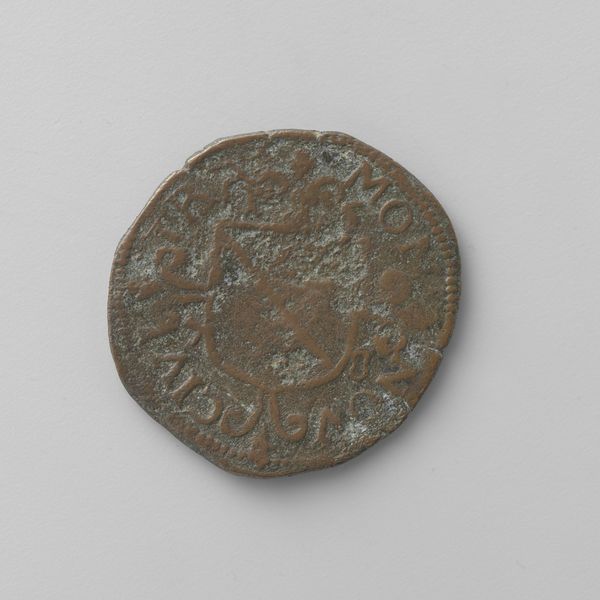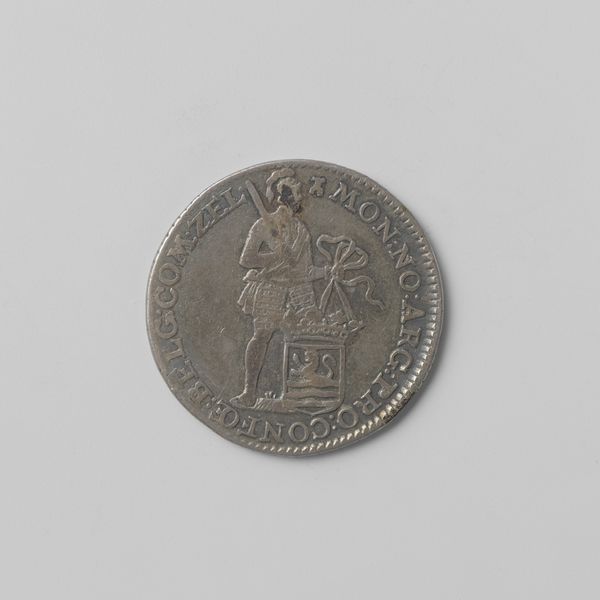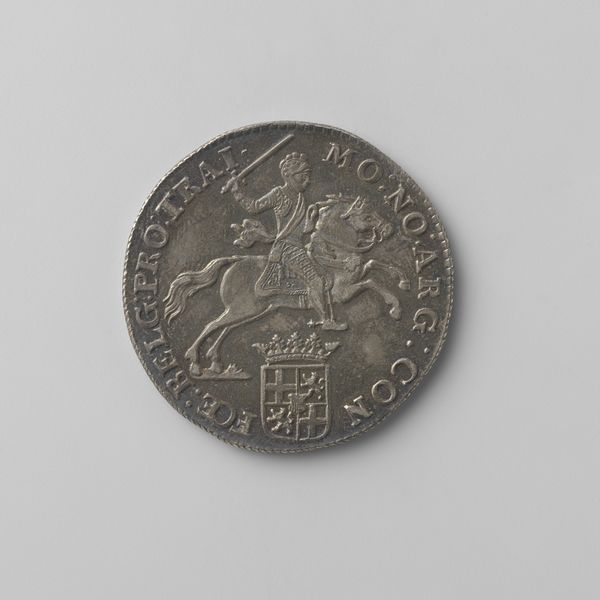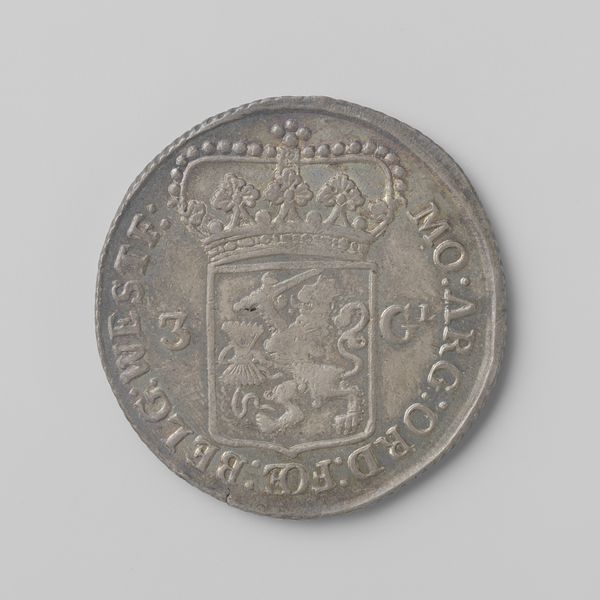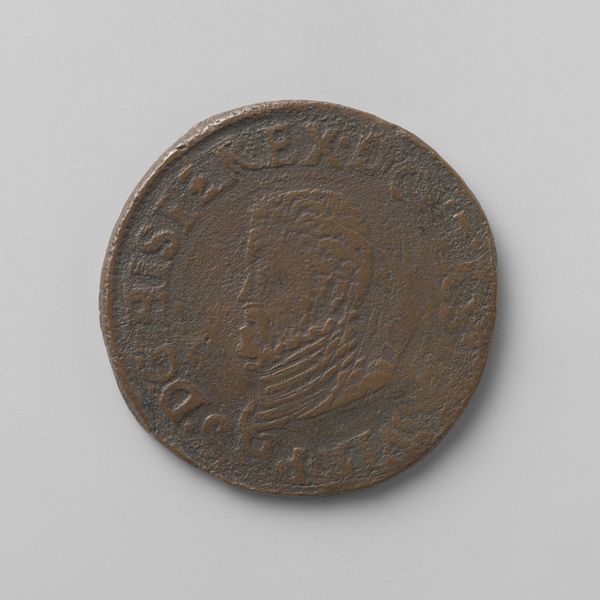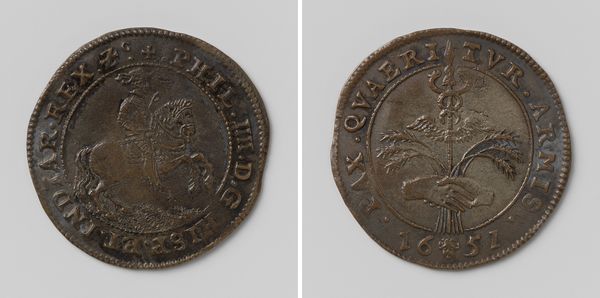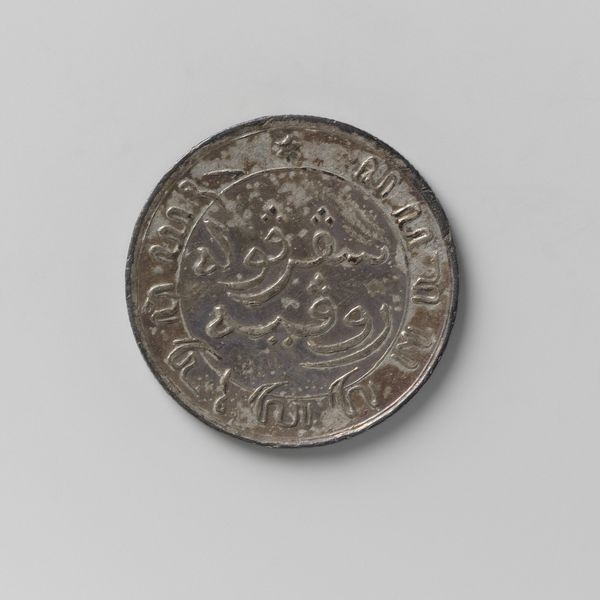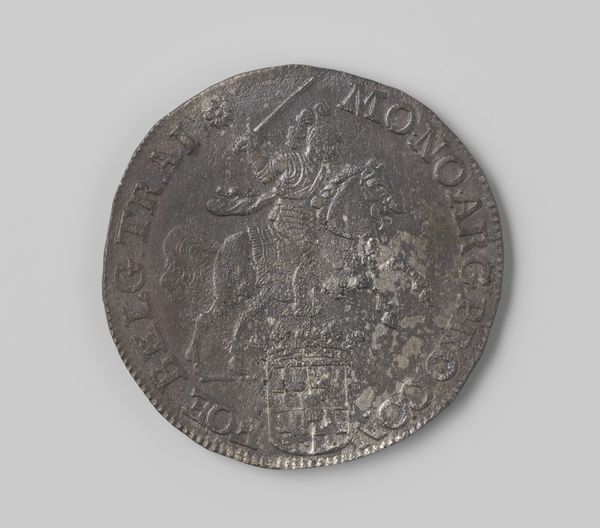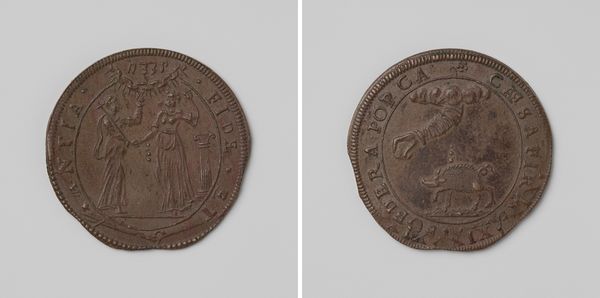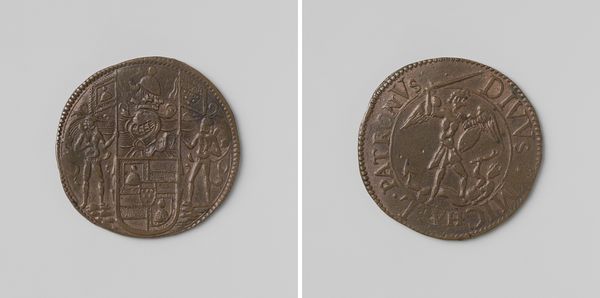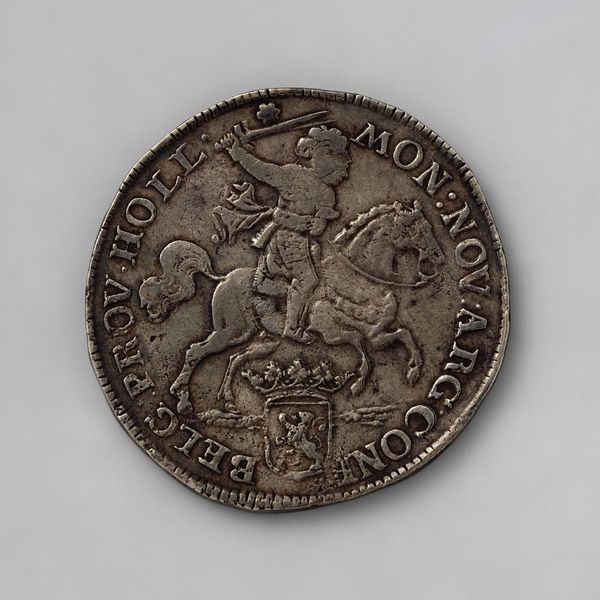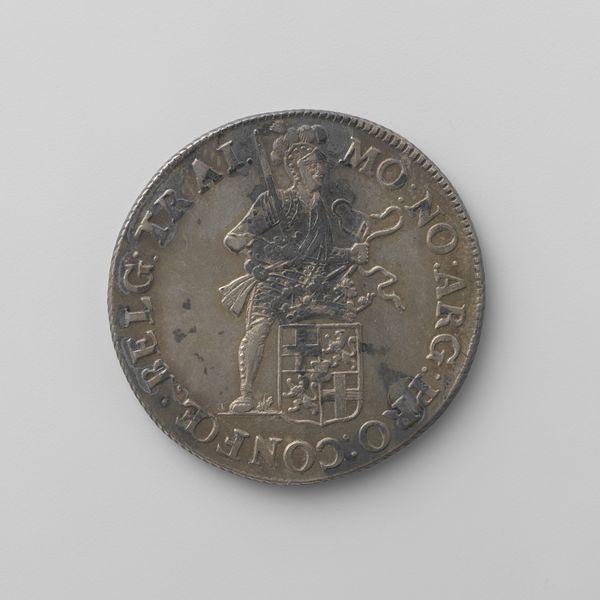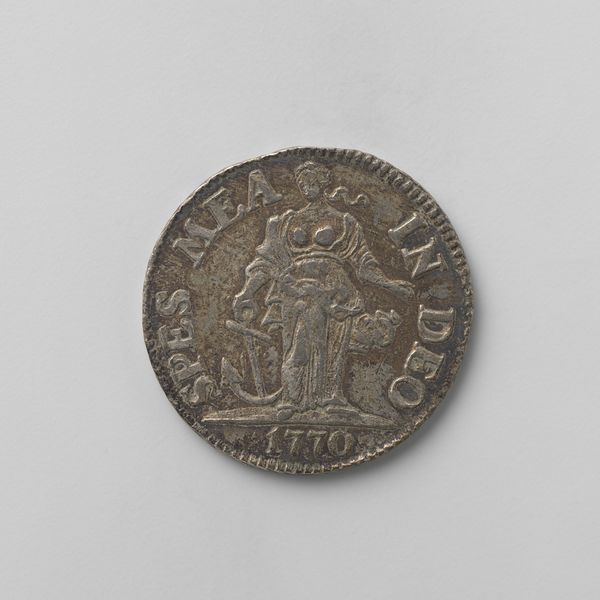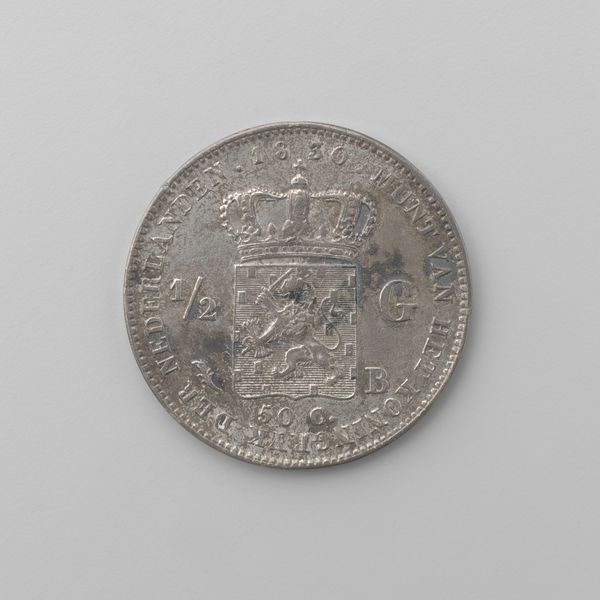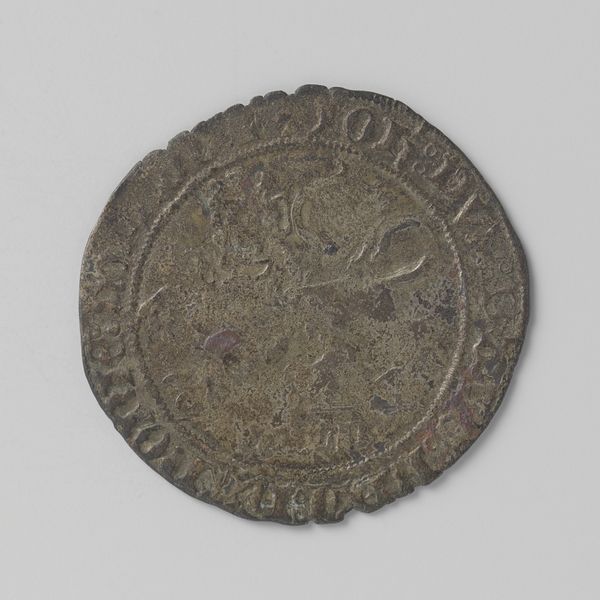
Afzwering door de Staten-Generaal van Filips II, koning van Spanje als landsheer der Nederlanden 1583
circular oval feature
cold feature colours
3d printed part
rounded shape
rounded
curved arc
unrealistic statue
3d shape
metallic object render
product mock up
Dimensions: diameter 3.2 cm, weight 5.23 gr
Copyright: Rijks Museum: Open Domain
Curator: What an intriguing artifact! This is a representation of "The Act of Abjuration," a pivotal moment when the Dutch Republic declared its independence from Philip II of Spain. It's dated around 1583. Editor: It feels...heavy. Visually, of course, but there's something oppressive about that central image. Like history compressed into a dense, symbolic disc. Is it meant to be bronze? Curator: Quite possibly. Bronze or copper. The medal or coin-like format was very common for disseminating political messages at the time. See how the image depicts the severing of ties. On the left, we have a figure representing the Dutch provinces, while on the right is a female personification of Liberty or the Republic, standing triumphant over the lion, which, in this context, can be viewed as Spanish power. Editor: So, a divorce visualized. The figures are rather stiff, but that gesture of severing – almost handing off the power, if you will – is striking. But who's actually designed this propaganda tool? Is it pure imagination, or is it based on other illustrations of the day? Curator: It is the work of Gerard van Bylaer. While its source inspiration isn't explicitly documented, Bylaer may have relied on a blend of imagination and contemporary depictions. His aim, of course, would be to project a powerful vision of the newly independent Dutch Republic. Consider, this object exists within a historical landscape saturated with political and religious strife, it has a powerful statement for popular consuption. Editor: I can’t help but see echoes of more ancient motifs here too. This "handing over" has precedents in other medals, say ones showcasing imperial triumph, which makes the message quite subtle; it reclaims old symbolism for a novel purpose. Curator: Absolutely! That's the fascinating dance of history – reusing symbols, repurposing narratives. This object acts as a fascinating intersection. Its creation clearly indicates how images have been actively deployed to influence and shape perception, as instruments for political legitimization. Editor: This gives me the sense of weight and resolve, a visual embodiment of a people willing themselves into existence. It's quite moving when you think of it in those terms, and quite unsettling how relevant this all still seems. Curator: Indeed. Gazing at this representation reminds me that revolutions don't only unfold on the battlefield or in courtrooms, but also in the collective imagination, fueled by symbols like these, that become the cultural touchstones of self-determination.
Comments
No comments
Be the first to comment and join the conversation on the ultimate creative platform.
